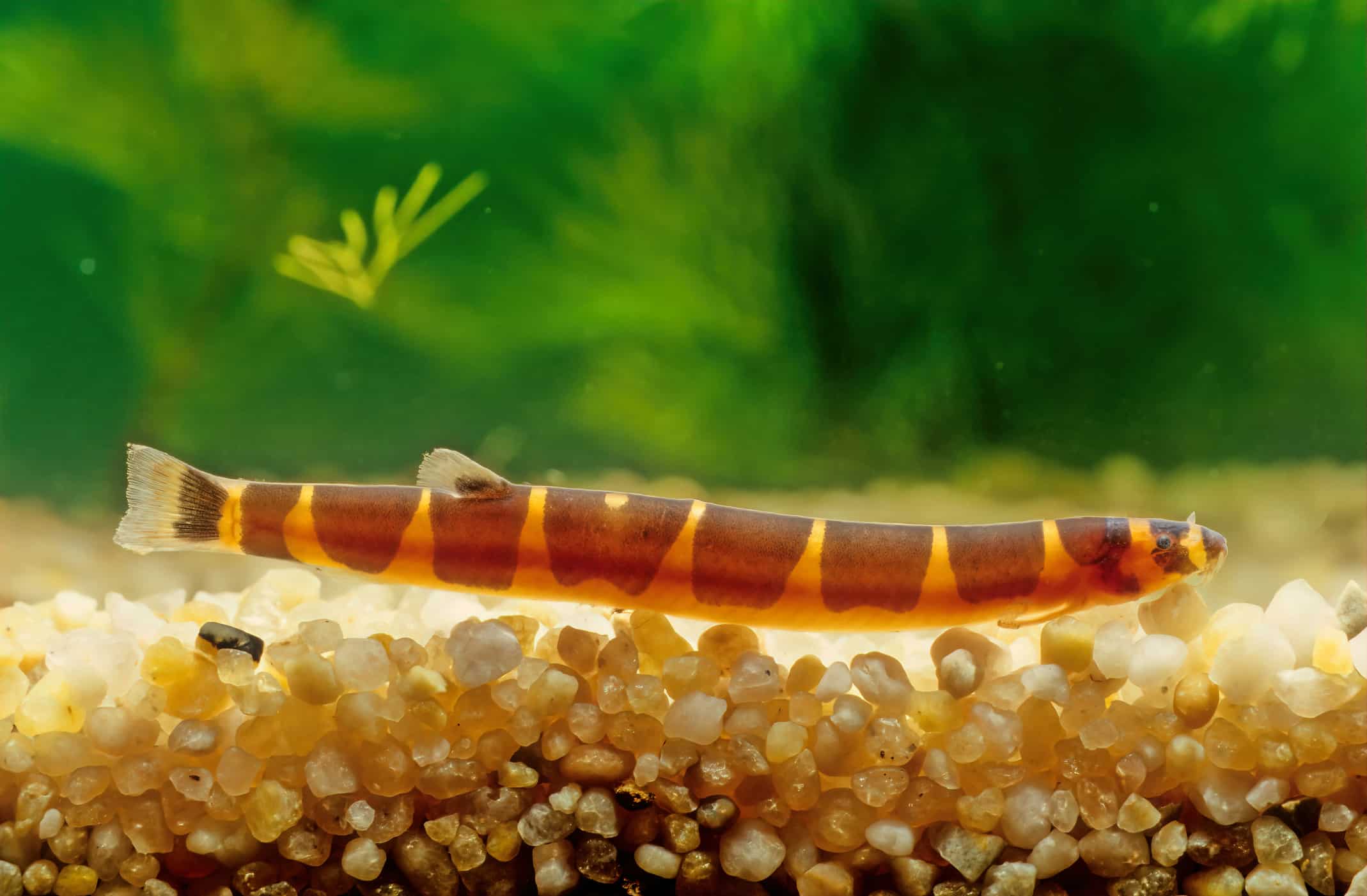
Panda Loach (Yaoshania pachychilus) Aqua Imports
Kuhli loaches are shy and will spend their time burrowed in the substrate or hiding around caves and rocks in their environment. If you want a livelier and more colorful aquatic setup, you need to consider going for a community tank. Best Kuhli Loach Tank Mates So, which fish species make for compatible tankmates for Kuhli loaches?

Panda Loach (Yaoshania pachychilus) Aquatic Arts
Summary. Scientific name: Pangio unknown 01 Common name: Panda Kuhli Loach, Panda Coolie Loach Synonyms: Unknown Distribution: Thailand Sexual Dimorphism: Females are likely to look noticeably plumper when loaded with eggs like other Pangio species Maximum size: 3.25 inches (8.25 cm) Similar to: Pangio anguilliris, Pangio doriae

"Aquarium Fish Set Cleaners Ancistrus / Pleco, Panda Cory, Cory Nanus
Temperature: Keep the water temperature between 70° - 79° F (21° - 26° C) as Kuhli Loaches thrive in tropical conditions. Use a high-quality aquarium heater and thermometer to help manage and maintain these temperatures. pH: Your Kuhli Loach prefers slightly acidic water, with pH levels ranging from 5.5 to 7.0.

Buy Panda Loach.. Fast, Professional Service
These barbels contain taste buds which assist with finding food in dark, murky waters. Loaches are a bottom-dwelling species and spend their day rooting through the substrate foraging for food. Most loaches are highly social and prefer to be kept in schools. This care sheet covers a variety of loach species, including: Clown loach.

Kuhli Loaches กินอะไร? Newagepitbulls
Sometimes referred to as a Coolie Loach or Leopard Loach, the Kuhli Loach ( Pangio kuhli i) is a unique tropical fish that hails from freshwater streams in Southeast Asia in areas like Malaysia, Thailand, and Borneo. They're a part of the Cobitidae family. While they were first classified back in 1846, the Kuhli Loach has a very long history.

Panda Kuhli Loach Overview & Care Guides
The Panda Kuhli loach, sometimes referred to as Pangio Kuhlii, is an oddball species that makes a fascinating complement to your tank. These aquatic creatures have an eel-like appearance and swim around the aquarium in strange snake-like behavior. Are you fascinated by these weird fish and plan to add some to your tank?

Panda Loach (Yaoshania pachychilus)
The Kuhli loach, also commonly known as Coolie loach, comes from the Tropical waters of Indonesia, Malaysia, Java and surrounding areas. The Kuhli is eel shaped. Its body colorings are a kind of salmon-pink/yellow with dark brown to black stripes that half circles the body. The stomach is a sort of a whitish colour.

Pure Line & Panda Loach YouTube
Kuhli loaches need pristine water with plenty of dissolved oxygen to thrive, so we recommend 30% water changes every week. Deep-clean the substrate once a week with an aquarium vacuum, paying particular attention to areas where debris accumulates, such as around plant bases, underneath decorations, and in the tank's corners.

Panda Loach Yaoshania ( Protomyzon) pachychilus online shop
The kuhli loach is an interesting species of fish that does well in a community tank. They have a unique and unusual appearance that makes them a popular choice for many home aquaria. The first time you see one, you might think they're a type of snake or worm but they're not, they're a species of loach.

Pin on fish
Kuhli Loach. This is an awesome fish that we recommend to pretty much anyone. In fact, they were one of the very first fish we wrote a care guide for when we started this site! They've become quite a popular bottom-dwelling fish in the freshwater community because there is a ton of upside to owning one. They're easy to care for, live quite.

Panda Loaches Picture Lounge CanadaPleco Forums
Panda Loach - Yaoshania pachychilus. A true dwarf loach that grow to a max size of around 2" - 2.4" or so. Thee uncommon dwarf sized loaches are native to the south of China. They do good in shoals of 5 or more and add much activity to any tank once well accustomed to their new home! Panda Loaches are also known under the latin scientific name.

Panda Loach (Yaoshania pachychilus) Aquatic Arts
Kuhli loaches are a hardy, beginner-friendly fish, known for their unique eel-like bodies, beady black eyes, and bristly barbels or whiskers around their mouths. Multiple species are labeled as kuhli loaches, but Pangio kuhlii is the most common type with its alternating pinkish-yellow and dark brown bands.
.jpg)
FileGiant panda at Vienna Zoo (cropped).jpg Wikipedia
Table of Contents What are Loaches? Is a Loach an Eel? Types of Loaches Kuhli Loach (Pangio kuhlii) Clown loach (Chromobotia macracantha) Hillstream loach (Sewellia lineolata) Yoyo Loach (Botia almorhae) Dojo loach (Misgurnus anguillicaudatus) Zebra Loach (Botia striata) Panda Loach (Yaoshania pachychilus)

Panda Loach (Yaoshania pachychilus), TankBred! Aquatic Arts
It typically grows to about three inches, and is often confused with other species, which can be a challenge for enthusiasts. I've listed as many as possible of the common and scientific names for the variations of Kuhli Loaches available in the list below. Half-Banded Kuhli Loach A.K.A. Striped Kuhli Loach, Sumatran Kuhli Loach (Pangio Semicincta)

Kuhli Loach Betta Taking A Picture Of The Kuhli Loaches But My Betta
Panda Loach is a type of loach fish that are native to the fast-moving mountain streams in Guangxi Province, China. This active and peaceful fish gets its name from irregular black bands over a lighter-colored body. This species is available to hobbyists but is rare. While the fish isn't endangered or threatened, authorities in China have.

Panda Loach Care Guide How To Create Their Perfect Home
The Kuhli loach (Pangio kuhlii) is a popular freshwater aquarium fish species appreciated for its small size, unique eel-like body shape, and active cleaning bottom-dwelling behaviors. The ideal aquarium setup for Kuhli loaches requires sandy substrate, hiding places, subdued lighting, and good water quality. By providing an appropriate habitat, water conditions, diet, and social needs, […]